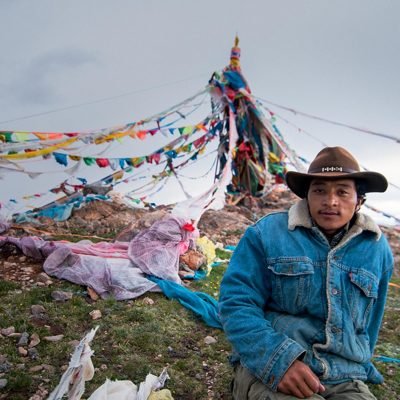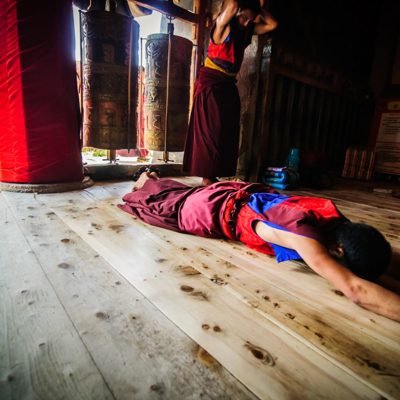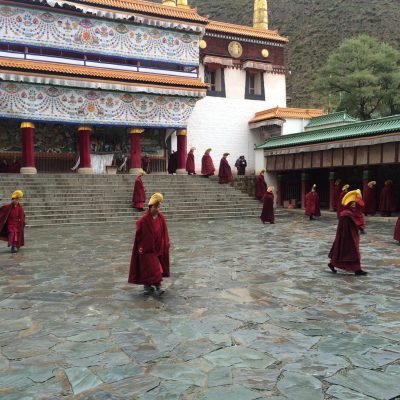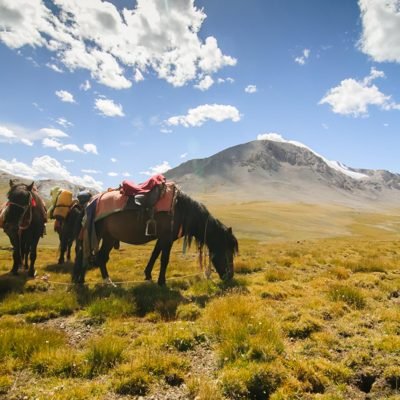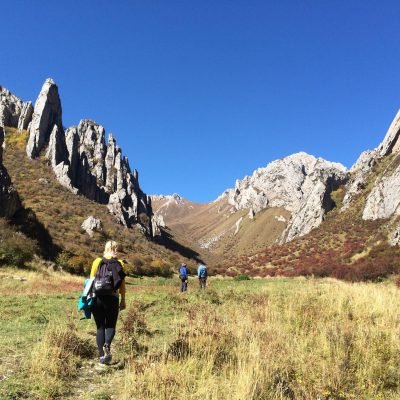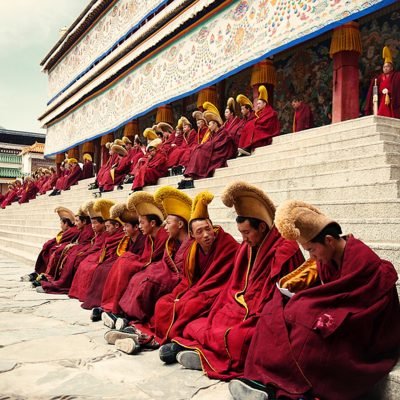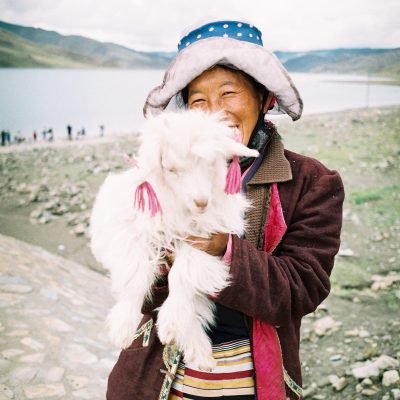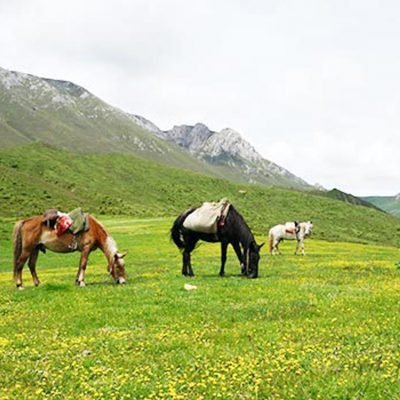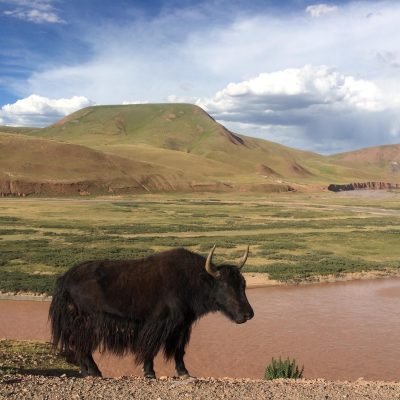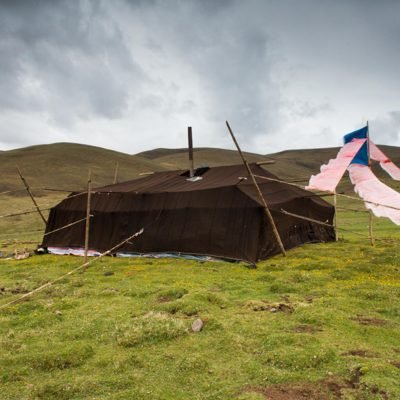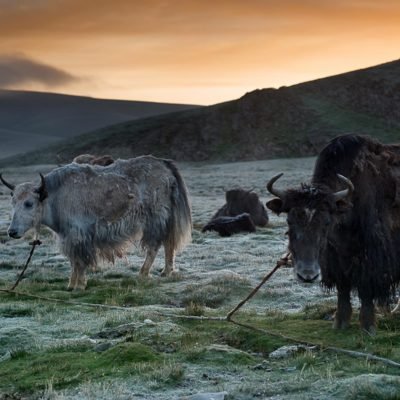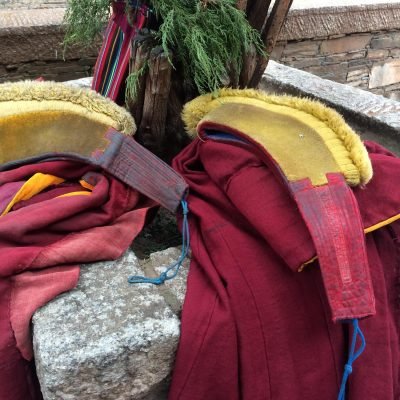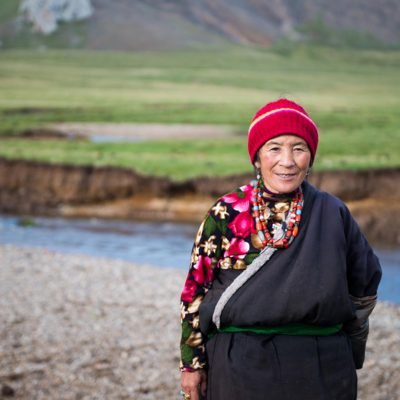Day 1 → Pickup from the Xining Airport and Transfer to Hotel in Rebkong
Xining is the capital of Qinghai Province and has a population of 2.5 million people and is at an elevation of 2,500 meters. It is an interesting city of many contrasts, home to many different cultures and customs and at least 6 six different people groups including Han Chinese, Mongolians, Tibetans, Tu, Salar, and Hui. After pickup in Xining we will drive 2.5 hours from Xining to Rebkong, a classic Tibetan town with 3 large Tibetan Buddhist Monasteries . We will sleep in Rebkong for acclimatization purposes.
Day 2 → Rebkong (Tongren)
Rebkong is a vibrant, active town with lots of nomads coming in and out to trade yak meat, yoghurt, barley flour, and bread and to worship at the the important LongWu and Wutun Monasteries. We will stroll around both the lively market scene and the Rebkong monastery in the mid morning. With a reputation unequalled in the Tibetan world, many visitors come here exclusively to see the monastery's collection of centuries old Thangka paintings. Here we can watch the resident artists continuing this ancient tradition that fuses religion and art together. In the afternoon we may have a chance to witness this intricate artwork in action as we tour the Monastery of Sengi Shong, a small monastery that produces Thangkas that have been sold and displayed all over the world.
Day 3 → Rebkong - Labrang (Xiahe) 110kms
Eat breakfast and then depart for Labrang in the morning. Our drive will take us through the heart of Amdo’s grasslands and by many yak hair tents to see some of the last remnants of functioning nomadic culture in the world. Along the drive we can stop to eat some of the freshest yak yoghurt on the Plateau in Garze town. From here we will ascend to a high pass with prayer flags and continue our drive to Labrang. Before entering Labrang town we will stop in some remote grassland villages to experience local culture and food with friendly Amdo nomads.
Day 4 → Labrang
We will visit Labrang Monastery at an elevation of 2900m / 9512 feet. Labrang Monastery is a popular pilgrimage destination and has incredible alpine forests (rare on the high Plateau) and rich grasslands all around it.
Labrang is by far the largest and most influential monastery in Amdo and is Tibetan Buddhism's most important monastery town outside the Tibetan Autonomous Region. Today it has 1,500 active monks and nuns. As we explore in the afternoon we may have a chance to see the local markets and do some shopping for handicrafts and jewelry.
Sleep in hotel in Labrang.
Day 5 → Labrang - Langmusi 250kms
Eat lunch at an authentic Tibetan restaurant and then drive 220km (4 hours) to Langmusi, a historic Tibetan town right on the border of Gansu and Sichuan Province with two important but very different monasteries -one on each side of the border.
Sleep in hotel in Langmusi
Day 6 → Langmusi
On Day 6 we will explore the two monasteries - one on the Sichuan side of town and one on the Gansu side of the town. Each monastery is very beautiful but very different. Both monasteries have golden rooftops and temples that are filled with meditating monks and beautiful Thangkas. We will do a short hike past the source of the White Dragon river into a narrow gorge that has grandiose rocky summits on either side of the canyon. We will have some rest time in the afternoon with opportunities to explore the local Tibetan markets in Langmusi town.
Day 7 → Langmusi - Zoige (Ruo’ergai) 100kms
Take in the smells and colors of fresh pastures away from the hectic noises of the city as you sit calmly in a bed of luxuriant grass and surround yourself with a simpler culture in a simpler time. Relax as we continue to explore and experience nomad culture in a very in depth way on a 3-4 hour drive through the grasslands. We will stop to take photos in the grasslands and visit nomad families in their tent to see how they live in harmony with the land.
Day 8 → Zoige - Thankor 100kms
Today we continue our to journey into the nomadic sections of of northern Sichuan Province. The highlight of the day will be the hike we take to the top of a mountain to see the very first bend (of 9 snaking bends in total) of the Yellow River. This is a dramatic “U-shaped” turn in the river that is sure to leave a deep impression on your sense of elegance and beauty as your eye follows the twists and turns into the the horizon. The First Great Bend of the Yellow River is located in Maqu County. In Tibetan, “Maqu" just means “Yellow River”.
The Yellow River, called the Mother River of China, originates from the Bayankala Mountains in Qinghai Province and flows from the west to the east down into Sichuan Province and eventually out to the sea.
Day 9 → Thangkor- Huangyuan- Barkan
Today’s journey is devoted mostly to driving a total of 6 hours south through the grasslands. We will stop at authentic nomad camps and have steaming hot tea (cooked over a yak dung fire!) with nomads. While we sip tea we can ask any questions we may have about their unique lifestyle and customs so that we get a face to face understanding of all that we have seen and heard in the previous days.
Day 10 → Barkan - Leshan Grand Buddha
Another full day of driving takes us off the Plateau; we will descend off the steppe into the comparatively tropical valley as we near the capital of Sichuan Province, Chengdu. Sichuan is famous for its food (some say it is the best cuisine to be had in all of China!) and we will get to taste this legendary cuisine food for both lunch and dinner.
Sichuan is well known for its spicy cuisine and the use of Sichuan hot peppers and numbing peppercorns that are indigenous to this particular climate. The Sichuanese are proud of their cuisine, known in China and abroad as one of the Four Great Traditions of Chinese cuisine. The cuisine here is of "one dish, one shape, hundreds of dishes, hundreds of tastes", as the Chinese saying goes, to describe its acclaimed diversity. The most prominent traits of Sichuan cuisine are described by four words: spicy, hot, fresh and fragrant. But don’t worry - if you are not one to try spicy food there is enough diversity in the menu that there are lots of more moderate but tasty options as well :)
Day 11 → Leshan Grand Buddha
Today we will experience a significant piece of Chinese history as we visit the Leshan Grand Buddha, just 100km north of China’s mega-city Chengdu. The Leshan Giant Buddha is a 71-metre (233 ft) tall stone statue, built between 713 and 803 (during the Tang Dynasty). It is carved out of a cliff face that lies at the confluence of the Minjiang, Dadu, and Qingyi rivers in the southern part of Sichuan province in China, near the city of Leshan. The stone sculpture faces Mount Emei, with the rivers converging and flowing below his feet. It is the largest stone Buddha in the world and it is by far the tallest pre-modern statue in the world.
In the afternoon, drive 100km to Chengdu city, a city of 12 million people at 500 meters in elevation. Chengdu was first established in 311 BC and still carries much of this ancient influence as a place of cultural significance and a gateway to Tibet, bearing such nicknames as “City of the Hibiscus” and “City of the Turtle”.
In the the afternoon we will eat at a Tibetan restaurant in Chengdu’s Tibetan Quarter, or Little Lhasa. This area is located in the south-west of Chengdu, near the First Ring Road.
Sleep in Chengdu.
Day 12 → Fly out of Chengdu
If we have time (depending on the departure time of the flights) we will visit the Tibetan Market in Chengdu in Market- a bustling market full of souvenirs and handicrafts made and sold by Tibetans in the Tibetan corner of Chengdu.
Here you can shop for prayer flags, thangkas, tibetan tea pots, or just get a last cup of yak butter tea.
We will drop you off at the Chengdu Airport (CTU) and will say Goodbye at the airport.
